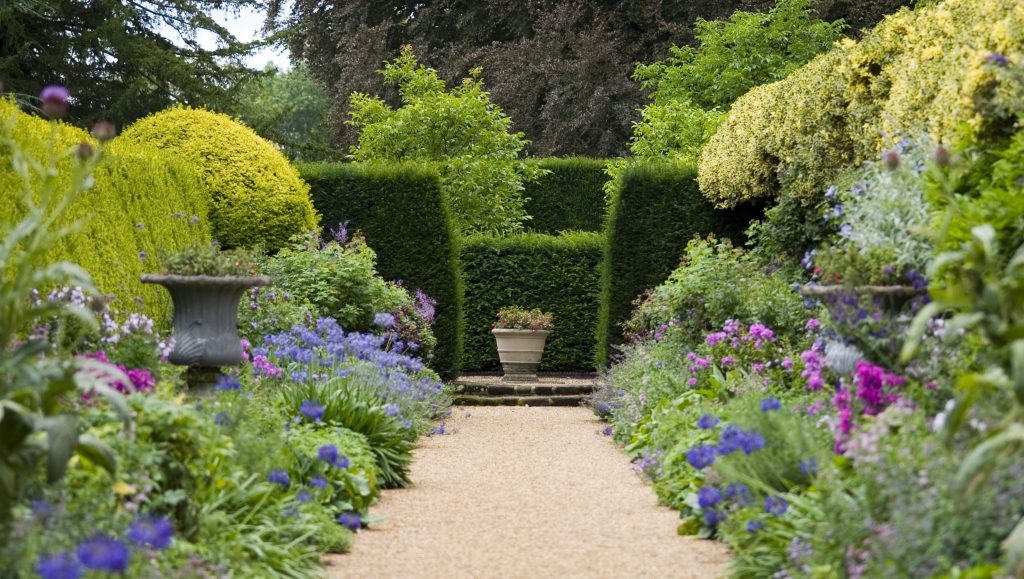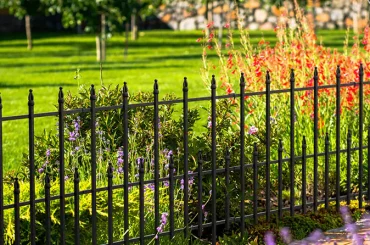Table of Contents
Pruning shrubs helps keep them neat and tidy and prevents them from outgrowing their space. But as well as aesthetic benefits, cutting plants such as hydrangea shrubs back can help keep them healthy, promoting fresh new growth and an impressive show of flowers. The key is knowing what time of year shrubs benefit most from pruning.
Pruning Deciduous Shrubs
The best time to prune deciduous shrubs depends on when they are at their fullest.
Spring-Flowering Shrubs
Late spring to early summer is the best time to prune a healthy spring-flowering shrub. These deciduous shrubs produce flowers on last year’s growth. Prune immediately after flowering, and the shrub will have plenty of time to grow new flower buds for next year’s blooms.
Remove dead, damaged or weak stems and cut back old stems to make way for new growth if the shrub looks congested. Cut spent flower stems back to a healthy outward-facing bud to promote flowering next season.
Most healthy early-flowering shrubs only need to be lightly pruned. But it’s important they get trimmed annually to promote healthy growth and prolong the shrub’s lifespan.
Summer-Flowering Shrubs
Pruning summer and autumn-flowering shrubs in late winter or early spring allows them to take on plenty of new growth for flowering on the current season’s growth. This is the best time of year to carry out any severe pruning or renovating required. Avoid winter pruning of late-flowering shrubs to minimise the risk of frost damage in new shoots.
Remove dead, damaged or weak branches to keep the plant healthy and maintain its attractive shape and size. Cut away old flower heads and prune the stems, leaving one or two buds growing from the wood. Feed shrubs with a quality all-purpose garden fertiliser after pruning.
Pruning Bush Berries
Most soft fruit or berry shrubs produce the most fruit on new growth, up to three years old. Pruning about a third of the oldest stems helps promote growth on the younger stems, increasing the plant’s yield.
Left un-pruned, berry bushes can easily outgrow their allocated garden space, and the bigger they get, the smaller and more difficult to harvest the fruit becomes. So it makes sense to prune shrubs annually for plentiful and juicy fruit harvests.
The best time of year to prune bush berries is in winter, while they are dormant – February is ideal. Cut the old stems back to ground level in late winter to allow spring growth the heal the cuts quickly.
Pruning Evergreen Shrubs
Evergreen shrubs hold onto their leaves throughout the year. Many are grown for their foliage and don’t produce flowers, which can make it tricky to know when to prune evergreen shrubs. Most evergreen shrubs don’t actually need too much pruning (unless grown as a topiary or a formal clipped hedge.)
Check evergreen shrubs annually and cut away any damaged or dead growth. Remove crossing branches and any signs of disease.
Those evergreen shrubs that do bloom can be pruned straight after flowering. Otherwise, the best time to prune evergreen shrubs is mid-spring. Cutting evergreens back at this time of year prevents frost damage and allows fresh spring growth to hide any pruning scars.
Pruning Clipped Hedges and Topiary
Formally clipped hedges and topiary require regular pruning to maintain their neat shape. Any extensive pruning needed should be carried out in late winter or early spring, after the risk of frost has passed but before the growing season kicks in.
Light pruning can get done throughout the season to keep the hedge looking its most formal. However, it’s important to note that bird nesting season runs from March to August. Always check hedges for signs of movement before pruning. If there are birds in the hedge you must wait until after they’ve flown the nest before trimming.
Pruning Perennial Flowers
Ideally, perennial flowers should be pruned twice a year.
A light prune to deadhead faded flowers encourages another flush of blooms later in the season. Leave more severe pruning until autumn or spring.
Herbaceous perennials die back below ground level for the dormant season, emerging again in spring. Cut back dead stems and foliage growth in late autumn or early spring, as the plant begins to show signs of new shoots growing. If the perennial in question has attractive seed heads, leave it until spring. It will provide winter interest to the garden and can be cut back in spring when it starts to look untidy.
If you choose to cut back deciduous plants in autumn, mulch the area to protect the crown against harsh winter temperatures.
Pruning Tools
Pruning shrubs is made a whole lot easier when you have the right tools to hand.
Loppers
Loppers are a valuable pruning tool with long handles allowing for more reach. They are ideal for pruning tall shrubs and other plants that can be tricky to reach. Most loppers can cut branches and stems up to 3 inches thick. They are easy to use and cut with precision to help prevent the plant from being shocked or stressed from pruning.
Secateurs
Secateurs are similar to loppers but can be held in one hand, making them ideal for smaller pruning jobs. They are most often used for deadheading spent flowers, removing damaged or dead shoots, and generally tidying rogue growth.
Garden Shears
Shears are usually used for clipping evergreen shrubs grown as hedges. They work with a scissor action and offer precise cuts. Their long blades cut several shoots simultaneously, meaning less effort is required to cover a large area.
Pruning Saws
While regular saws will do the job, specific pruning saws are designed to make things quicker and easier. For example, the shape is better for getting in among the stems, and the narrow curved blade is excellent at cutting through green wood and smaller branches. Pruning saws can cut at any angle with precision and are perfect for producing a clean cut.
At first glance, pruning evergreens and other shrubs can seem counterproductive if you want them to grow quickly. However, by removing old wood and diseased growth, pruning actually encourages more vigorous growth. Some shrubs require very little pruning, while others respond well to a harder prune.
Taking nesting season into account, the best time to prune shrubs depends on when they are at their fullest. Knowing your plant and how the year’s growth progresses is key to choosing the right time of year for pruning.





